Confessions of a Public Speaker (13 page)
Read Confessions of a Public Speaker Online
Authors: Scott Berkun
Tags: #BUSINESS & ECONOMICS / Skills

If you ask people not to use cell phones, and someone answers a
call in the front row, what should you do? It’s up to you to enforce the
house
rules because you have the microphone. Or what about the
guy who asks a question that goes on for three whole minutes? How long
will you let him ramble on? Twenty seconds is more than enough time for
a question; after 40 seconds, it’s a monologue and everyone in the
audience hates him. But after a minute, people will be staring at you.
You are allowing all of the energy to be sucked out of the room. They
can’t do much about it, but they know you can.
Never be afraid to enforce the rules you know the room wants you
to follow. When in doubt, ask the room for a show of hands: “Should we
continue with this topic or move on?” If they vote to move on, that’s
what you should do. When you enforce a popular rule, you reengage
everyone who supports that rule. You restore your power and earn the
audience’s respect. So, don’t hesitate to cut off a blowhard, silence
the guy on his cell phone, and interrupt the table having a private but
distracting conversation. As long as you are polite and direct, you’ll
be a hero.
People want to leave early, but when those same people get the
microphone, they run late. Don’t be like them. Always plan and practice
to end early. If a window of opportunity presents itself to finish a few
minutes ahead of schedule—giving your audience a head start on beating
traffic, getting to their next meeting, or attacking the snacks in the
conference hall—do it. No one ever wants you to go longer. If people
really love you, they’ll often stick around to hear more of what you
have to say. Let everyone else escape. Give the audience your email
address, and stress that you’ll happily answer additional questions over
email. Be as generous and giving of your time as you like, but make sure
people are opting in, not being forced to listen to you more. Be an
attention liberator and set them free. Case in point: this chapter is
over.
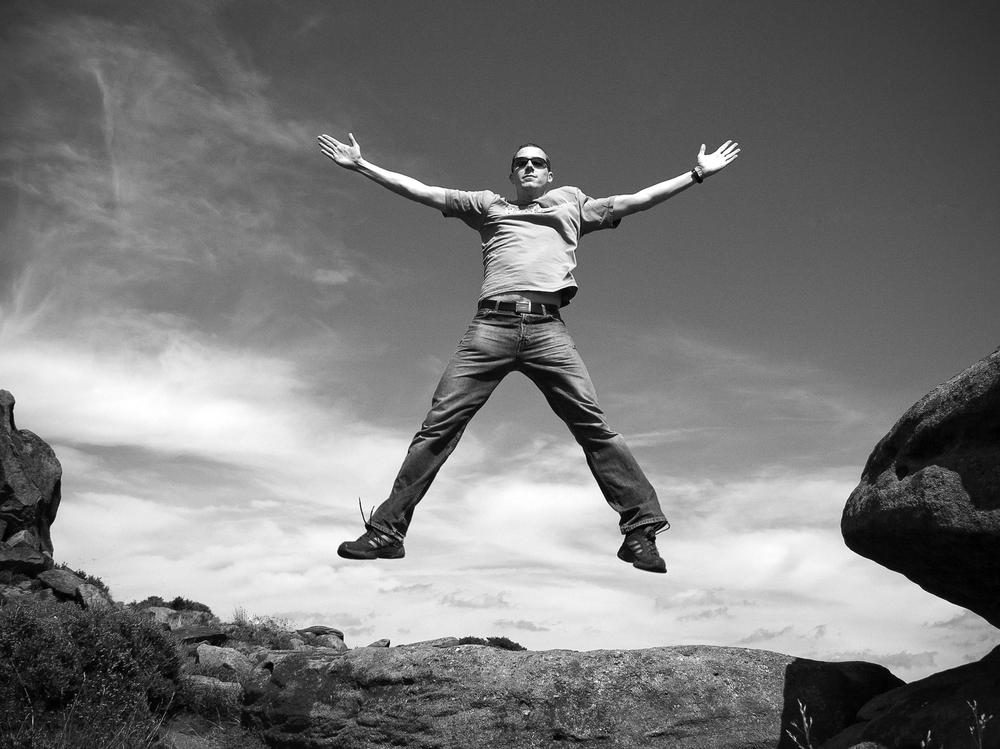
It’s May of 2008, and I’m at
CNBC studios dressed in black shoes, black pants, and a
black turtleneck, staring into a camera surrounded by bright white lights.
Looking into a wall of lights seems like heaven until you realize that you
can’t see anything, your eyes hurt, and it’s fucking hot. With each
passing second, it’s less clear whether the goal is to film me or to see
how long it takes for me to melt like the witch from
The Wizard
of Oz
. Perhaps it’s both. On the ground is a strip of masking
tape that marks where my feet need to stay as the 10-person film crew
surrounds me with various gear, cameras, light filters, and microphones,
ensuring I look fantastic as I embarrass myself on national television.
Despite how hard it is to stand still for so long, the real challenge is
that I’m expected to do the worst kind of nothing—the kind of nothing
where I have no distractions while everyone stares, prods, and pokes me—as
I wait and wait for them to be ready for me to say my lines. To stop my
mind from exploding due to the sheer helplessness of being trapped in
permanent hurry-up-and-wait mode, I focus on the drama playing out every
few minutes behind the crew, drama only I can see.
It goes like this: CNBC employees come into the café to get a bite
to eat but stop mid-stride, surprised at the site of me in their fancy
cafeteria, clad in all black, illuminated by a sea of lights like the
leader of the scary aliens in a sci-fi movie. Saddened by the discovery
that their lunchroom has been converted into an enormous glowing
soundstage, they glare at me for a long moment before turning back to the
halls to search for other provisions. They glare with the same disdain
you’d have for the asshole who smiles as he steals your parking space. I
want to tell them it’s not my fault. I want to point at the crew so they
share the blame, but there is no escape. I am clearly the target of their
hate for the rest of the afternoon. Standing alone on the set, an entire
crew orbiting around me, it must appear as though I think I’m the center
of the universe, a concept which—given the many layers of embarrassment
running through my mind—could not be further from the truth.
I’m at CNBC to film a five-hour primetime TV series called
The Business of Innovation
(
Figure 7-1
). It’s a media
jackpot for an independent like me, so I’m trying as hard as possible not
to screw it up. But in these moments on the first day of taping, dressed
like a Steve Jobs impersonator (at CNBC’s request), I’m feeling 10%
adrenalin, 20% fear of embarrassment, and 70% complete and utter panic.
There are too many contradictions for me to hold on to sanity. First, I
have no idea what is going on, yet I’m the center of attention, much like
how it would feel to be invited over for dinner by a family of cannibals.
Second, I’m a star of the show, yet I have no control and no shortage of
people telling me what to do. Third, I’m fascinated by everything and want
to ask hundreds of questions but can’t because I’m surrounded by busy film
professionals who have little patience for my curiosity. Even if I were a
narcissist, even if I loved seeing myself on film (which I don’t), it
would be impossible not to panic and think I’ve made a big and permanent
mistake—after all, bloopers last forever on YouTube. If they post any of
my flubs online, including the take where my fly was open, it will be more
famous than anything else I ever do.
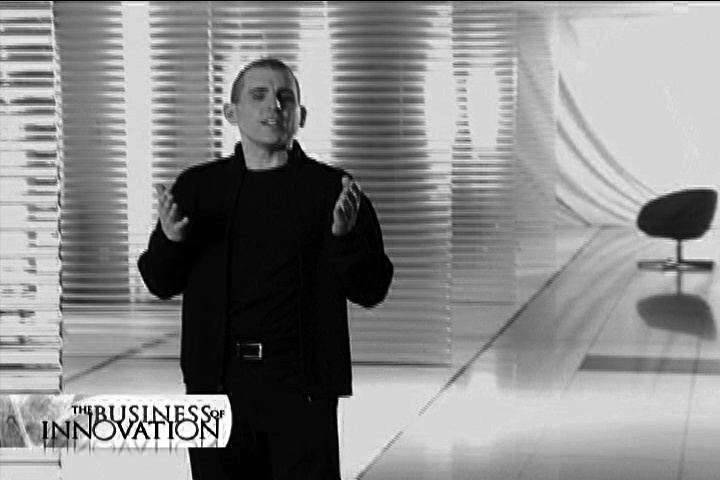
Figure 7-1. The B-roll footage for The Business of Innovation. Notice the
chair in the background, a chair no one ever sat in.
The good news for me is that I’m only one of five experts for the
series, and I know I can hide behind the others at any time. We make quite
a crew: Vijay Vaitheeswaran writes for the
Economist
, Keith Yamashita runs his own innovation
consulting firm, Ranjay Gulati teaches at Harvard University, and Suzy
Welch writes for
Business Week
. Headlining the show
is Maria Bartiromo, the star anchor for
CNBC (even cooler, she’s the only woman in history to have a
tribute song written to her by Joey Ramone). And on top of this, each
hour-long episode is packed with a rock-star list of CEOs, politicians,
luminaries, and venture capitalists, including Jack Welch (former CEO of
GE), Howard Schultz (CEO of Starbucks), Marc Ecko (fashion mogul), and
Muhammad Yunis (Nobel Peace Prize recipient in 2006).
The impressive lineup continues with the CEOs of Zappos,
Kodak, LG, Xerox, FedEx, and Sirius Radio, as well as executives from
Harley-Davidson, Timberland, Procter & Gamble, and on it goes. But for
all the massive power of these featured guests, you’d be most surprised by
one thing: they were just as afraid of being on television as I
was.
Despite their entourages, fame, and ridiculous levels of success and
media exposure, nearly everyone seemed just as disoriented by television
as I was. No one talked about this, of course. It’s like being bored at a
funeral—most are, but no one wants to admit it first. But I saw their
jittery hands, heard their nervous questions, and sat in many long,
awkward, tense silences with these very famous people. There was regular
caffeine and sugar abuse, and the green room
[
35
]
was packed with an arsenal of such provisions. The producers
know that many people shut down from nerves and shrink to whispers when on
camera, as some of these executives did on the show. So, the producers err
on the side of a caffeine-and-sugar-induced fistfight with a co-host than
sedate mumbles and soft shrugs.
To assuage their fears, many high-powered executives travel with
staff, media experts, or heads of PR. These folks follow their clients
around on the set, mediating discussions, approving decisions, and
whispering private advice to them. It doesn’t seem to help; in fact, the
people who bring PR staff with them are the ones who probably have more to
be worried about. Herb Kelleher (founder of Southwest Airlines) and Jack
Welch were all on their own, and the friendliest and funniest people I
talked with on the show.
The real killer in all this, the thing no PR or flunky can
compensate for, is the waiting. Many people can work themselves into the
right mindset to do fine on television, but there is so much hurrying up
to wait that it’s hard to time the mindset with the opportunity to use it.
You get ready, you get psyched, and then uh oh,
another reason to wait 10 minutes. It’s shocking for CEOs
and luminaries to learn their time is not as valuable to the network as it
is to their companies. They will be forced to arrive early, wait around,
and wait some more as needed to serve the making of the show.
What few understand is that the world of TV has its own place in the
space–time continuum—every second matters more to them than to the rest of
the working world. Despite the power of the Web, it’s TV that still has
the most money at stake per second of product. Case in point: based on my
bestseller
The Myths of Innovation
,
CNBC flew me across the country to interview me to appear as
an expert on the show. The interview lasted exactly 33 minutes. So for 10
hours of flight and travel time for me to get to NYC, I spent less than an
hour interviewing to appear on a TV show. They covered my costs and hotel,
as they would throughout filming, but it was always clear: I was working
for them, not the other way around. For the true star guests of the show,
those with entourages or their own private islands, it must have been
baffling to rearrange their busy executive travel schedules, fly across
the country, drive all afternoon in traffic to get to CNBC, and wait for
hours in a studio just to be filmed for exactly 4 minutes and 30 seconds
(of which, perhaps half is used on air in the final edit). It was likely
the most humbling
experience they had all year. They shared the same look of
disbelief when, on set, they were told, “That’s a wrap, great job!”, just
when they felt they were getting warmed up. They expected to have the same
star power as in the rest of their lives, forgetting to realize that in
the world of TV, they are just another cog in the machine.
Speaking of making the show, the wall of lights I’m standing in
front of in
Figure 7-1
is
for taping what’s called
B-roll
. When I ask what the
B-roll is, I’m told it’s everything that’s not the A-roll. Asking a rookie
question gets you a sardonic answer; sarcasm and jargon reign in the
stressful world of television. TV people seem bright and upbeat but also
high-strung and impatient. Nothing happens fast enough for them. I’d later
learn that the
A-roll
is the primary footage for the
show, whereas the B-roll is the intros, credits, and other secondary
footage. When you are watching TV, B-roll is what appears during the
credits or between commercials, the bits of footage you never think about.
It’s easy to forget that someone produces every single second of
television. When you see Dr. House (from his eponymous show) on TV, even
if just for a commercial advertising the program, it means a crew spent
hours setting up the lights. If you hear him speak, it means sound
engineers spent hours setting up microphones and mixing sound. There is an
expensive back story to every split-second of broadcast media, as every
choice costs money and is done for specific reasons. And if they do it
right, you never even think about it.
Have you ever been in a bar as brightly lit as the one on
Cheers
? Or a hospital as cheery as on
Scrubs
? We know television isn’t real, but if done
right, the consistent lack of reality creates its own immersive world.
They call this
suspension of disbelief
. Even for
nonfiction shows like
The Business of Innovation
or
The Daily Show with Jon Stewart
, what you see is
never actually what happened during taping. There is editing. There is
sound mixing. Camera lenses change how people look. There are hundreds of
deliberate choices made for specific reasons, which explains why the
B-roll is filmed in the cafeteria and not the studio. They want it to look
very different from the A-roll, and with $200,000 worth of lights, gear,
backdrops, and effects, the cafeteria looks instead like a conference room
on the
Starship Enterprise
. You’d never guess where
we shot it if I hadn’t told you, even if you worked at
CNBC. The viewers will never know how silly it felt to stand
there in the cafeteria, how many takes it took for me to get each line
right, or how ridiculous the whole thing was during filming. And even
watching the B-roll myself, it was hard to connect what I
experienced with what was actually televised.
The big lesson from being on television is simple: we are always
performing. Any time you open your mouth and expect
someone to listen, you are behaving differently than you would if you
were alone. Admitting this doesn’t make you a phony—it makes you honest.
We are social creatures and behave differently to fit into different
social situations. Here’s an example. Think of a funny story or joke you
know well.
[
36
]
Now imagine telling that joke three different
times:
To your best friend on your couch
To five friends over dinner at a restaurant
To 20 of your coworkers in a boardroom
In each
case you are
performing to achieve an effect, primarily to make your
audience laugh. Each situation might be different, so the way you tell
the joke will change. The same is true every time you open your mouth to
speak. You always have a goal, whether it’s to express a thought, ask a
question, or make an observation. In trying to achieve that goal you
are, in a sense, performing. And the bigger the audience, the bigger you
need to be. Your voice needs to be louder, your hand gestures more
dramatic, and your pace more upbeat. This is especially true for
television. Since your appearance might be on a tiny TV in someone’s
living room or in a browser window on his computer, you have to act big
to project yourself across that distance.
Having done most forms of public speaking, I’ve learned that
television, radio interviews, YouTube videos, high school theater,
podcasts, and monologues are simply different kinds of performances.
Some are more intense than others, like being on national television, or
require more practice and rehearsal, like acting in a stage play, but
the basic rules are the same. Most people say they’re afraid of
performing for an audience, but this is bullshit. Unless you are living
alone on a private island and have your groceries mailed to you, you
have an audience every time you open your mouth. If you can talk to your
mom on the phone for an hour or have an all-night fight with your
boyfriend, you know most of what you need to communicate. And you
already know how to perform. You know how to express anger, fear,
passion, joy, and confusion. You know how to be dramatic, how to attract
attention, and most importantly, how to convert what you’re thinking
into words that you say and actions you do. It’s just a question of
doing it at the right level for the environment you’re in.
[
37
]
Oprah, Conan O’Brien, and Katie Couric know how to talk to
the camera
as if they were talking to a friend. It’s their ability to
make the strange, awkward world of
broadcast seem normal—even comfortable—that explains why
viewers like watching them. Howard Stern talks to his audience as if he
were having beers with his buddies, which is why people tend to love him
or hate him. Success often stems from the ability to make whatever
medium you’re in feel like something simpler and often less formal. It’s
the art of making the unnatural seem natural.
Few people think of television or radio as public speaking, which
is strange when you run the numbers. By definition, being broadcast
means that you will be seen by way more people than anything you
normally do. The first time I was on TV was in 1997 on a small cable
show,
CNET TV
; my appearance lasted a total of 180
seconds. It was entirely miserable, embarrassing, and paralyzing. I had
no coaching and only limited media exposure. Whatever that experience
was, it certainly did not feel like speaking, as I mostly mumbled and
tried to get my hands to stop shaking. I remember how weird it felt to
wear makeup (everyone on TV wears makeup), and how absurd it was to have
a half-dozen bright lights aimed right at my face. I remember thinking:
how do they expect me to see, much less say anything?
Being on television or radio, where millions of people will get to
see and/or hear you, requires speaking in a studio devoid of an
audience. Instead of a crowd of people, there is a circle of lights and
producers. Instead of interested, friendly faces, there are cold,
lifeless cameras and large, shiny microphones. When you watch the
nightly news, you see Brian Williams or Katie Couric behind a nice desk,
on an interesting-looking stage with a smart background. It’s all sharp,
classy, new, and put together with care. But anything not visible on
camera, which is the majority of the room Katie or Brian sits in,
probably looks like the engine room of a Navy battleship.
There are tall black walls, exposed ductwork, electronics, and
gear everywhere. The fancy graphics you see over their shoulders or the
tickers scrolling across the bottom of your TV do not exist anywhere in
the studio. In their place is empty space reserved for those digital
additions. On the studio floor in front of Katie, or in my case, Maria
Bartiromo, engineers scurry about in headsets and talk in whispers.
There are places where you’re warned not to step, and long stretches of
time when you cannot make a sound. There are no windows. There are no
plants. There is nothing comfortable or friendly about it. Simply put, a
TV studio is an expensive machine for making TV shows. Everything works
in service of the mythical audience, but that audience is not present.
TV studios are flat-out
unpleasant, unfriendly environments, more like factory
floors or scientific laboratories than comfy, supportive, warm places.
Even though all the producers and production assistants were fun, smart,
and attentive, they can’t overcome the relentless pace of the process.
The set at CNBC for
The Business of Innovation
had the additional challenge of being mostly virtual, except for the
platform and couch. We shot against a blue screen with the entire set
filled in digitally later (see the before and after in Figures
Figure 7-2
and
Figure 7-3
). Does that couch
look comfortable to you?
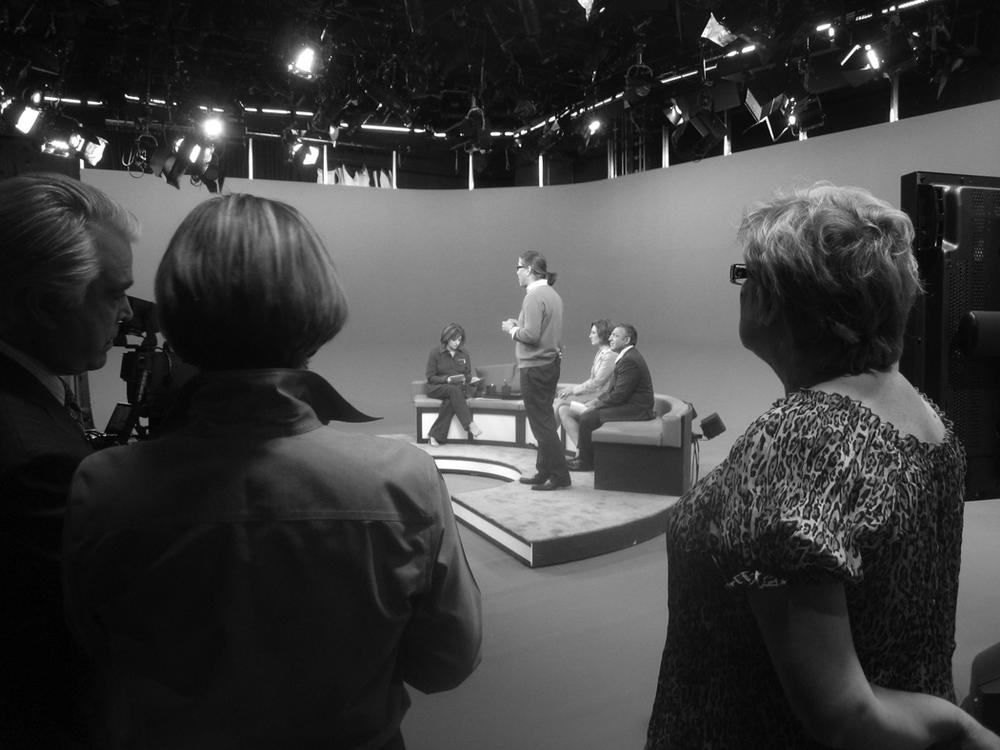
Figure 7-2. The set at CNBC for The Business of Innovation.
It’s true that many stages and auditoriums aren’t friendly either,
but by contrast to a TV studio, I can always see or hear what’s going
on—who’s listening, who’s bored. My senses work to my advantage. And if
I happen to say something completely stupid and inappropriate, like
perhaps forget where I am and claim how great it is to be in Boston when
I’m actually lecturing somewhere in NYC, I know instantly how the crowd
feels about what I said, even if it’s only their desire to kill me. I
always have the chance to respond to how the audience is responding to
me. But there is no audience feedback in most TV studios. This means you
might say exactly what the audience hoped, perhaps the secrets to
instant weight loss or how to achieve immediate world domination (or
peace, if you’re a sissy), but you would get no real-time reaction.
Alternatively, it means you can lie, talk too much, talk too little, be
an idiot, or be brilliant, and have very little sense of what it is you
are actually being.
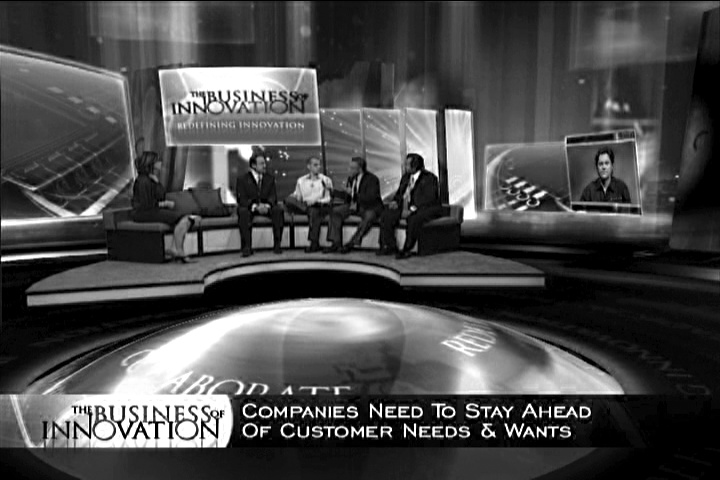
Figure 7-3. The set as seen on broadcast. That’s me in the middle in the
white shirt.
The lesson I learned from this is that any time you are videotaped
or recorded live without an audience, whether it’s for TV or the Web,
it’s far worse being in an empty room than a tough room. This is why
some shows have live audiences. They want to give their guests the many
advantages of having the support and energy of real people. But most TV
studios don’t have audiences. So, if you’ve ever wondered why people on
TV seem phony, stiff, irritable, or unnatural, it’s in part because
there’s no natural feedback loop for their behavior. On many news shows,
the only company is in the form of talking heads on satellite, people in
similarly isolated environments thousands of miles away.
Once when I was on MSNBC via satellite from Seattle, I had my
first chance to be a talking head. Whenever you see someone interviewed
on the news and put in a little virtual box on the screen, in reality
they’re talking from inside a small studio near wherever they happen to
be (
Figure 7-4
). To help
viewers sort this out, they put a cardboard poster with the skyline of
wherever they are up behind them to help clue you in. You never get to
see what these studios look like, in part, because they’re not
interesting (thus the cardboard backdrop). Speaking from within one is
worse than the challenges of the main studio since I can’t even see the
people I’m supposed to be speaking to. You’re just stuck in a small room
that’s
as charming as a large janitor’s closet, with a camera
pointed at your face.
[
38
]
Unless the show I’m on pays a few extra bucks for a live
feed, I can’t even see the video of what’s being taped. All I get is an
earpiece where a producer I’ve never met and can’t see mostly tells me
to wait, while I stare blankly into the lights. I’ve learned there’s a
special kind of anxiety when you’re waiting alone in a room but know
that at any moment you’ll be broadcast across the country.

Figure 7-4. What you see when you’re a talking head.
The secret to speaking to an audience without one actually present
is to forget the studio and ignore the
cameras (
Figure 7-5
). Go to a place in
your mind where you remember the last time you spoke to a live,
friendly, interested group, and match that style of behavior and
enthusiasm. Speak as if that same audience is listening, and you’ll be
fine. Great hosts help you do this by feeding you energy and support, or
even a softball question or two. All performers have a mindset they use
when everything else is going wrong, and that’s what gets them through.
Much like in public speaking, I learned from my experience filming at
CNBC that I just had to switch off the worried part of my brain and
laugh at how bizarre it all was. I bought the ticket by coming on the
show—I should get as much as I can from taking the ride.
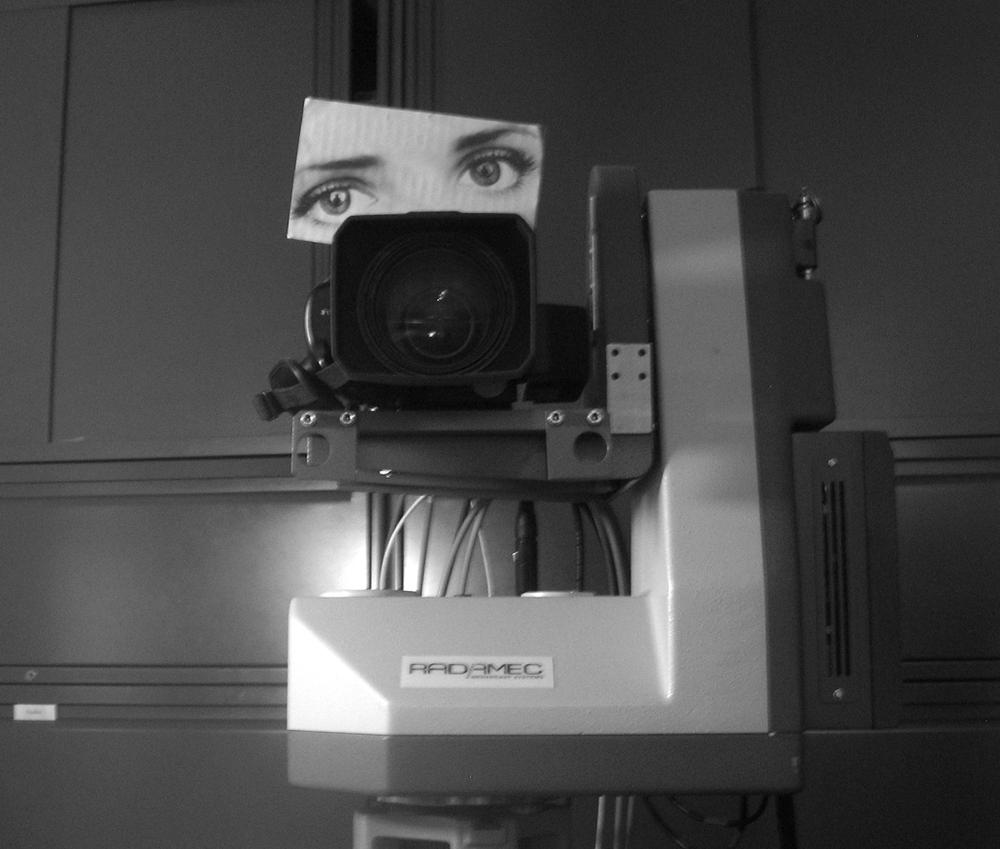
Figure 7-5. As creepy as this looks, it helps. Having something to look at
other than the Terminator-like glare of the camera lens is a good
trick to help you seem more comfortable.
